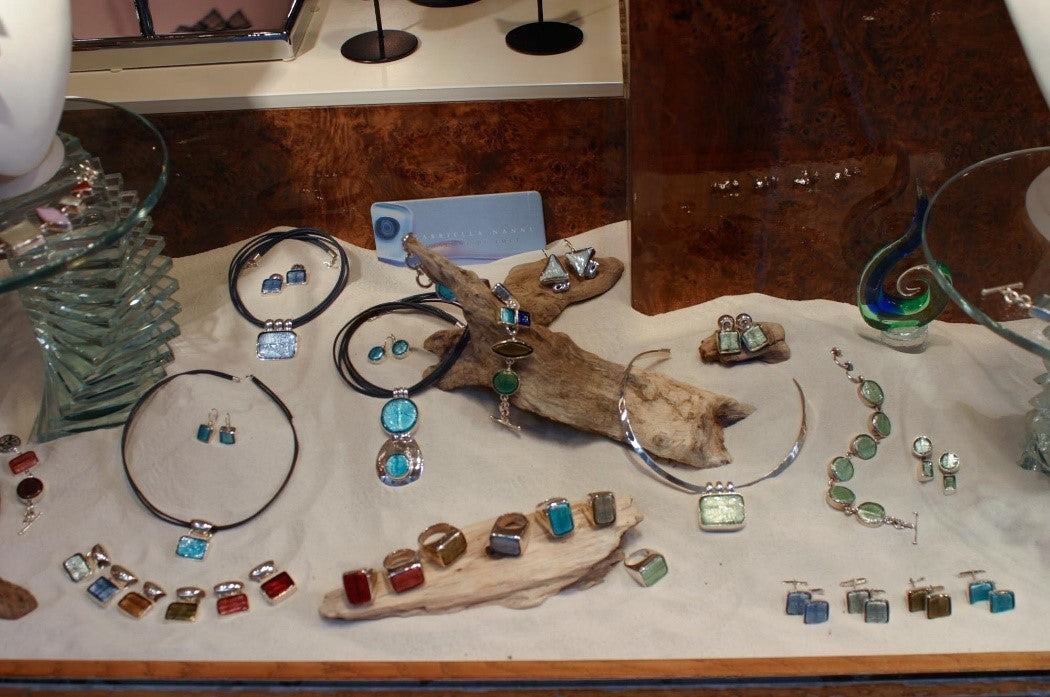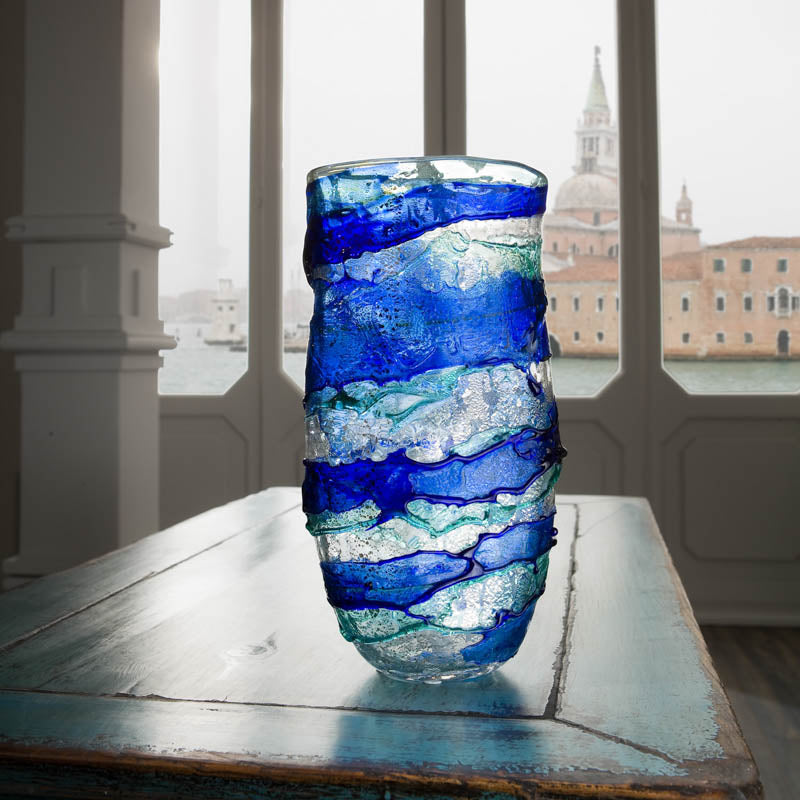Venetian or Murano glass jewelry is handmade and blown to perfection by glass masters and artisans. They follow centuries-old unique techniques imparted from one generation to other to make beautiful necklaces, pendants, earrings, and bracelets.
You can find and buy necklaces and pendants online at MuranoNet's store. These jewelry pieces can be a perfect way to express love to your partner. But what's so special about Venetian glass beads? How can find distinguish an original from a fake?
This guide answers all your questions relating to Venetian glass beads.
Frequently Asked Questions Regarding Murano Beads
Here are some of the common FAQs about this exquisite style of jewelry making:
Are Murano Beads and Venetian Beads Different?
There's no difference at all. Venetian art of glassmaking is just another name for Murano glassmaking because it comes from Murano Island. Hence, the name Murano glass. Venetian glass is used to describe the art of glassmaking that comes from Murano, and since Venice is more widely known than Murano, many people call it Venetian glass. Therefore, beads and other Murano glass products that are sold in Venice are called Venetian glass, but they're all just part of the Muranese art of glassmaking.
There's also a historical reference to it. Initially, glass furnaces were in Venice, and they were later moved to Murano to prevent fire. Thus, Venetian and Murano beads are the same and can be used interchangeably.
Where Are Venetian Beads Made?
Venetian beads are produced both in Murano and Venice in Italy. Murano is the glass island where glass is made. Murano is five minutes away from Venice if you take a boat. Therefore, many people think of Murano as Venice. The present cost of living in Murano and Venice has shifted bead making and lampwork to surrounding towns in Venice.
What Are Venetian Beads Made Of?
Venetian beads are made of glass which contains 70% sand (silica). Venetian beads are made from soda glass – a different type of glass with a COE of 90o. COE is the measure of expansion in cooling and heating in a glass. Bead making starts with glass rods made in Murano Island and later transformed into fine pieces of jewelry with translucent colors and designs.
How Are Venetian Beads Priced?
Venetian beads are priced per piece. Each piece is individually priced so that people can have freedom of choice. They can pick several beads as they like. Another reason to price the beads per piece is that they're produced individually and not in bulk.

Do Venetian Beads Break Easily?
You may have played with marbles when you were a kid or watched other kids play with them. They used to be sturdy. It's the same with Venetian beads. The round ones are sturdy, but longer beads with different shapes can be delicate. The best way to ensure that your beads don't break is to take care of them just like any other piece of jewelry. Treat them gently and place them safely, so they don't break.
What's the Bead Hole Size?
Typically a Venetian bead's hole size is small. It measures less than one millimeter. The hole size is similar to pearls. However, larger beads will have a relatively larger opening. You can also place special orders to make Venetian beads with larger openings.
Remember that larger holes are for larger beads because it requires enough density to maintain a bead's strength.
Are Venetian Beads Made From Copper Mandrels?
Most of the Venetian beads are produced on the copper mandrel. This was introduced on the Island of Murano in 1920 by a famous family called the Moretti family. Venetian beads were produced from metal mandrels before this discovery.
Are Venetian Beads Expensive?
Several factors influence the price per item. One of the major factors is the cost of labor. It requires fine craftsmanship to make Venetian beads and jewelry. Hence, the cost of labor is high. Secondly, Venetian beads carry remnants of tradition and history, and they're highly sought-after, which again influences the price. Only limited people are using this ancient tradition of glassmaking which has limited the supply. Hence, Venetian beads are expensive due to their superior quality and luxe nature.
Are Venetian Beads Annealed?
Annealing refers to heat treatment that changes a material's physical and sometimes chemical properties. Annealing ovens are used for larger pieces such as lampwork beads because it requires extensive craft and takes longer to make.

Why Are Venetian Beads Different?
Venetian beads look and feel different because they're not machine-made. They're made by hand, and it reflects slight variance. The sizes and shapes, therefore, vary. Hence, no two beads will be similar. It is one of the qualities of Murano glassmaking. When you get a product, know that it's unique to you, and no one else can claim to have a similar piece.
What Adds Sparkle to The Venetian Beads?
Aventurine is a colored glass that contains iridescent particles. These particles are usually chrome or copper that are crystallized by using a color agent in the glass. This crystallizing process takes place during the cooling process of molten glass.
What is Used in Silver and Gold Foil Beads?
Some Venetian beads have silver sterling and thin gold foil. The white gold foil is called "Platino" in Venice. It's the same foil that's also used in architecture, statues, and other gold-decorated products.
How Do You Take Care of Venetian Beads?
Essentially, bead making is a chemical process. The best way to care for Venetian beads is to give them a good bath. This way, you can prevent any residue and retain their shine and sparkle. No need to use chemical solutions. You can use water and soap to clean the glass.

Buy Murano Glass Online
If you're looking for authentic Venetian beads and jewelry, check out MuranoNet. They offer a variety of Murano glass products, including Venetian glass chandeliers, home décor items, dishware, and more. Buy women's glass pendant necklaces, tiffany double necklaces, or men's jewelry. Reach out to them for further queries.




コメントを書く
このサイトはhCaptchaによって保護されており、hCaptchaプライバシーポリシーおよび利用規約が適用されます。